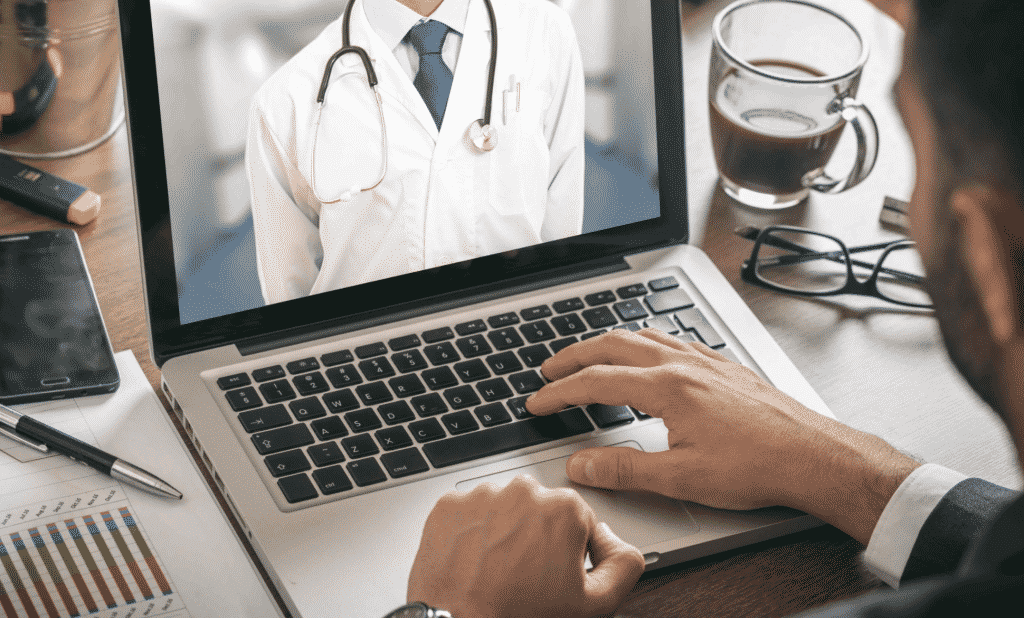With Covid magnifying the core problems of healthcare, adapting a new model of technology was imminent. The solution emerged in the form of advanced telehealth solutions. The process had to involve better adaption and a justified dependency to make it happen. Maximizing the use of healthcare applications resulted in some amazing consequences. Things started to become convenient, from patient data centralization to digital care provision and medicine eCommerce to on-call diagnosis. An optimistic side of the pandemic was finally visible. Let us learn how it started, what lies in the present and how the future will be revolutionized.
Pre-pandemic status of telehealth in the US
Before the pandemic, telehealth solutions never had a good impact on the masses. Due to the lack of investment, the technology nearly failed to make an impression in the healthcare industry. The companies could not ignore the decisive factors such as revenue, funds, data security, and the state’s healthcare policies. To make things worse, limited app features and safety debates by the medical healthcare provision led to ignorance of telemedicine systems in most countries.
And the issues continued to rise. Pharmacists debated against the medicine eCommerce, doctors nullified the effectiveness of online diagnosis, and many providers failed to implement advanced telehealth solutions in their venues. This was all about to change post-January 2020.
The Beginning of the change
At Oregon Health & Science University, digital visits of the patients clambered from 1,100 to 13,000 in just two months. By April 2020, the university empowered 1200 ambulatory faculty who would conduct virtual visits with patients. This was possible only after the adaption of telehealth systems. Another stat reports that in 2019, only 11 percent of US citizens were using telehealth apps, increasing to 46 percent in 2020.
Talking about the post-covid investment modules, the total venture in the first half of 2021 exceeded the investments done in the entire 2020. The facts and figures indicate the same story everywhere-the explosion of telehealth technology. It all began with the urge to avoid hospitals and clinics in the covid era. This led to rapid openings for innovation. Medical and healthcare professionals started being a part of the change. They met patients from where they were.
Virtual visits at mass vaccination sites and drive-through testing were common. House calls and hospital-level diagnoses from handheld devices came into the picture. Then emerged the online consultation and telemedicine solutions apps.
On-demand apps for lab testing were publicized. As more and more apps were invented, better features were incorporated. Geolocation, discounts on surgical products, free doctor consultations, vaccination status checks, and on-time emergency care snared our conviction. And in this way, rapidly, not slowly, technology joined hands with health. Companies forged into alliances and developed more ways to provide eminent patient care.
The adoption of this new technology
While authorization of advanced telehealth solutions was an easy task, its adoption faced certain ups and downs. With a history that debates the effectiveness of this technology, there will certainly be challenges. Some of these included licensure, medical reimbursements and coverages, accessibility, health disparities within the government, and state execution of telehealth services.
But most of the part was resolved, thanks to the pressing urgency created by Covid-19. While the cases skyrocketed, the government took convenience and, most importantly, the adoption. Some of the ways adaption became a sinecure were:
- Introduction of new telehealth laws on a national level,
- Inclusion of telehealth services in state and federal policies,
- Expansion of broadband across rural areas
- Organizational culture shifts to reduce costs
- Promotions and education by health centers
- Creating mass awareness on the use of telehealth app
- Amendments in health state and federal law
The scope for tomorrow
Telehealth has surely come a long way. But the actualization of goals is not complete yet. An extensive range of opportunities needs to be seized, and many challenges are there to be addressed. But there’s a silver lining; the future is bright. We may be looking at a new generation of better access to information and communication for health services. Covid is and will pave the way for advanced telehealth strategies in the coming years. Who knows we get to see services like remote patients screening, telemedicine triage use, appointment without entering the room, and lab tests during travel? While discussing these futuristic opportunities, many companies are developing them, and some have even incorporated them in their real-life service protocols.
On the corporate side of things, the race for offering the best telehealth solutions is getting tougher day by day. Health companies are cashing in on new technologies and incorporating advanced digital modules. But the beauty of this competition is that the patients will always be benefitted as they are always at the receivable end. It is no wonder that in times to come, costs will decrease, time will be saved, and convenience will be adapted across all channels of advanced telehealth solutions.
Telehealth will stay
In a world where the healthcare system seemed to become greedy day by day, the telehealth app arose as a fully-functional tool. While this technology remained in hibernation for years, the pandemic revealed and necessitated its use in many ways. The use of such apps averted meltdowns in hospitals, and it even helped healthcare professionals who could not earn due to social distancing.
In a nutshell, we know how the world has changed, and we also realize it won’t be the same ever after covid-19. So why should the healthcare industry remain the same? Telehealth services should be encouraged, and the boundaries on its use should be reconsidered in places where its adoption is still minimal. Only then will we be able to witness a revolution where its transformational proficiencies for both patients and doctors are utilized.


